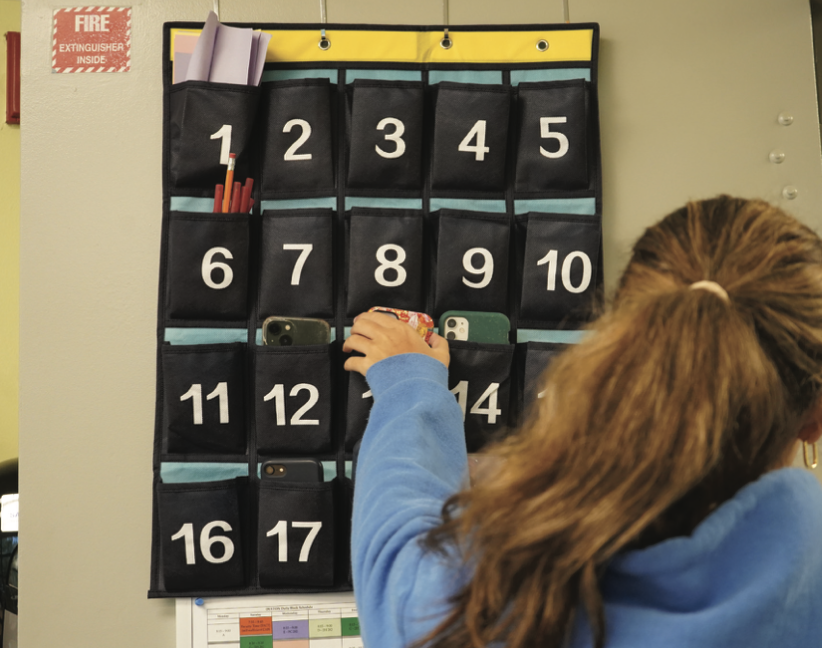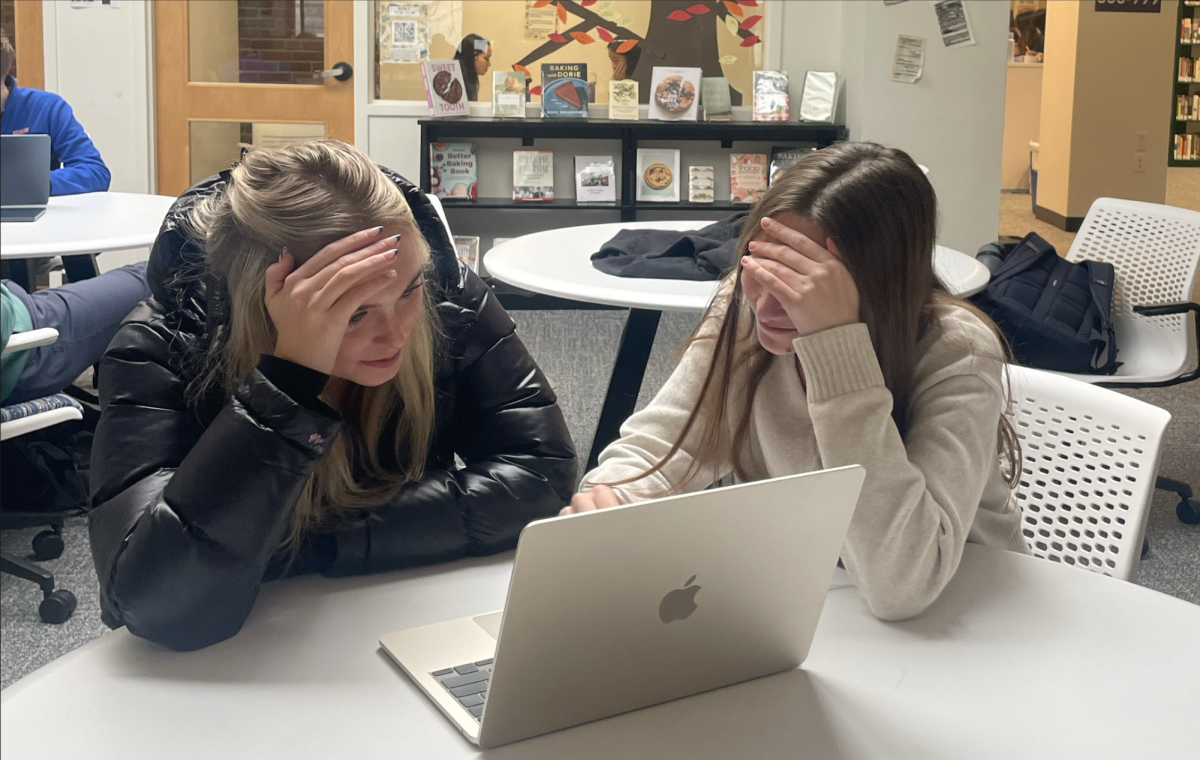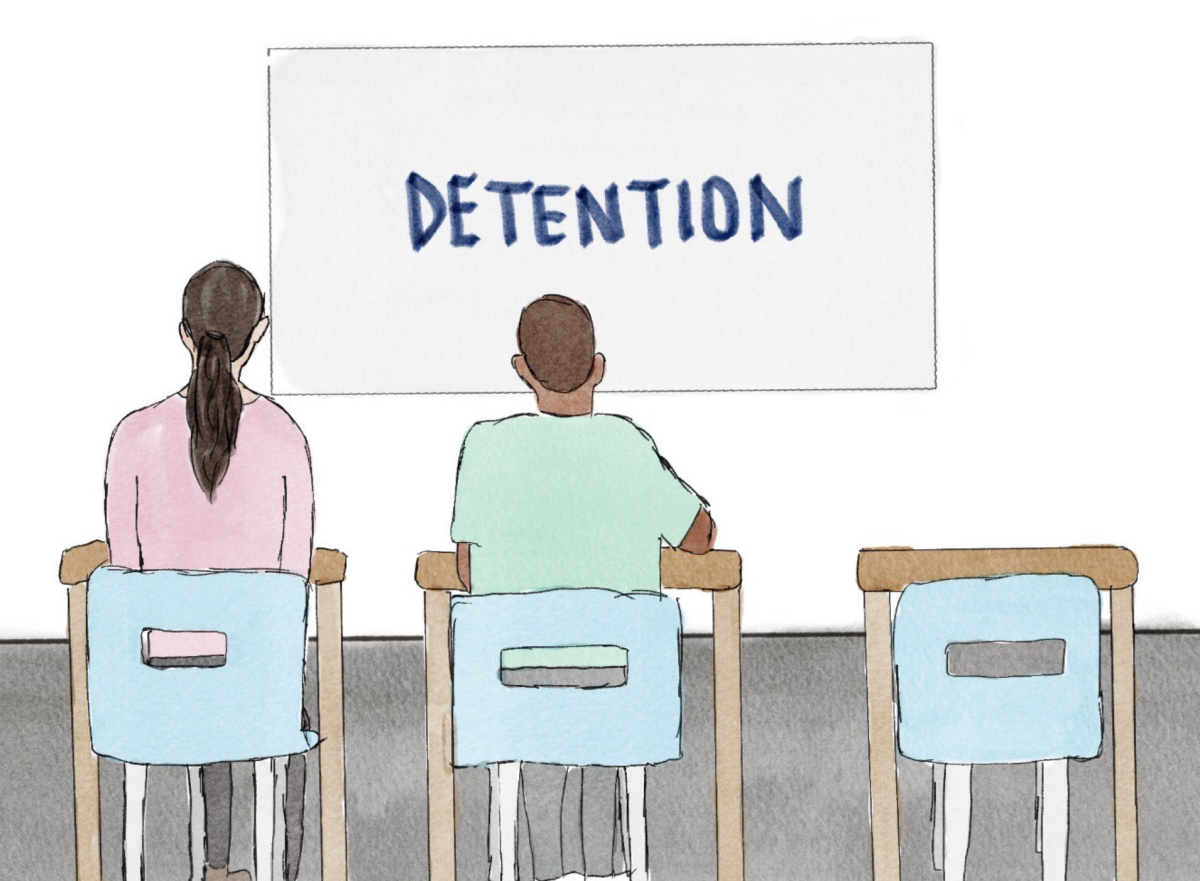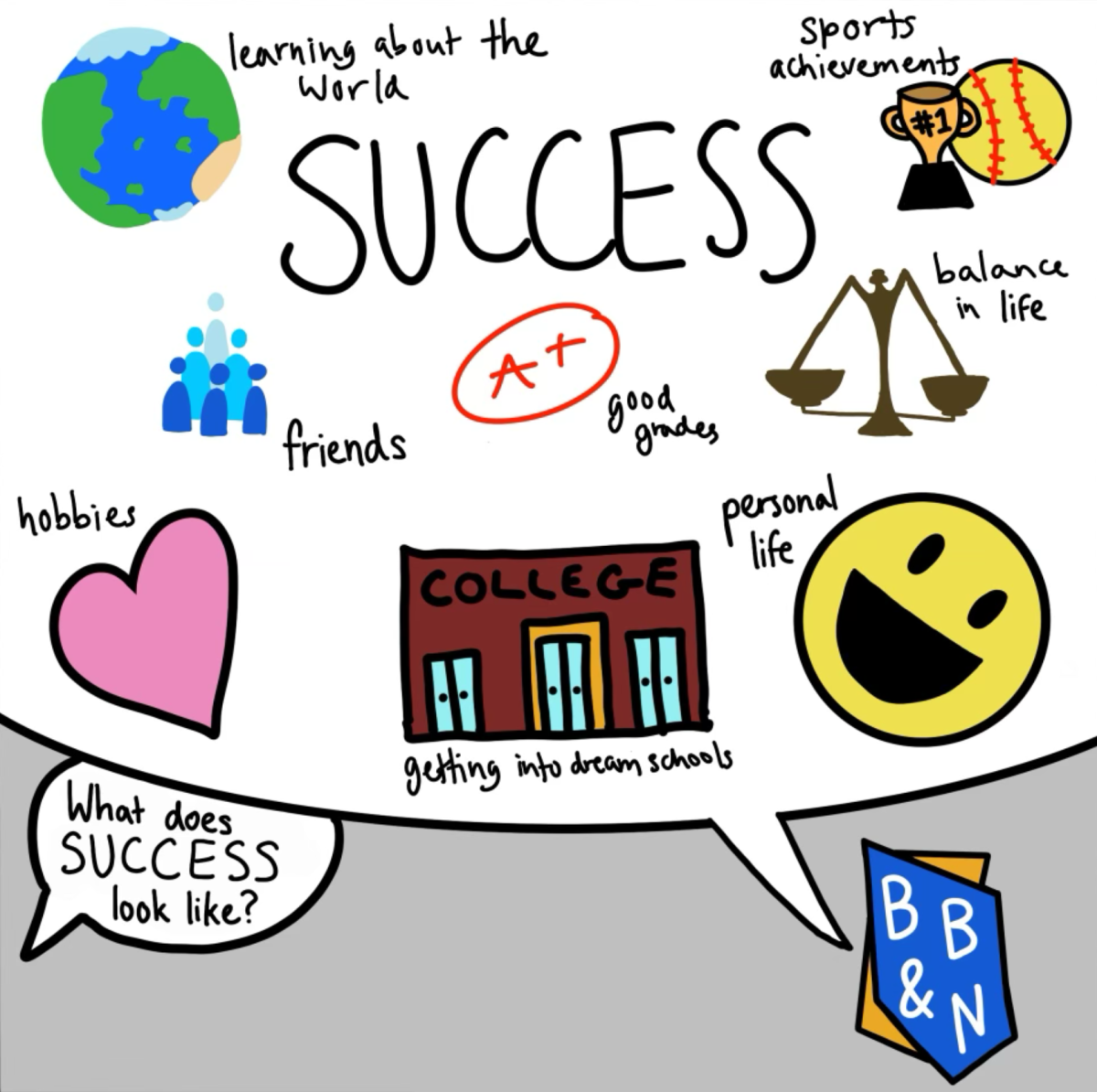Stuffed in a student’s pocket. Placed face down on the desk. Checked into a “phone hotel.” Tucked into an overflowing backpack. Plugged into a charger. Upper School (US) students enter their classes this year under the jurisdiction of their teachers’ personal phone policies. Teachers may use their full discretion to consider how to minimize cell phone distractions in their classes, US Director Jessica Keimowitz said.
Some have decided to utilize designated areas of their classroom to collect phones, while others request that students keep their phones face down on their desks. Some teachers allow their students to manage their phones under the expectation that they will not use them in class unless specifically directed. The school has not mandated that all classes follow the exact same phone policy, Ms. Keimowitz and US Dean of Teaching and Learning Michael Chapman said.
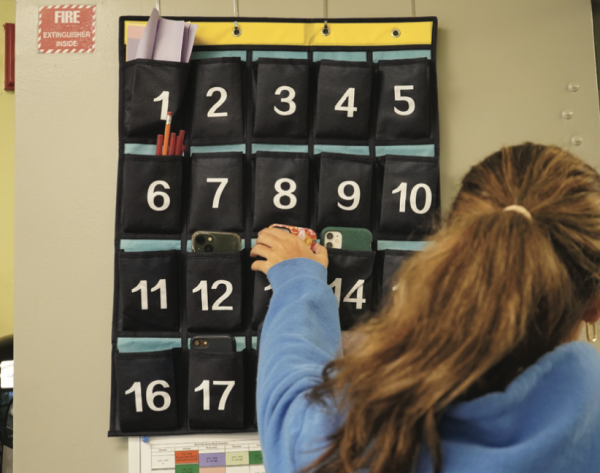
Nationwide, 72% of high school teachers surveyed by Pew Research reported that “students being distracted by cell phones is a major problem in their classroom.” In response to these concerns, more than 13 states have implemented bans or restrictions on students’ cell phone use, according to Education Week.
According to the All-School Student and Family Handbook, which was last updated prior to the 2024-2025 academic year, “Cellular phones and other communication devices may not be used during the academic day other than in specific areas that the school has designated as appropriate.” Ms. Keimowitz clarified that these appropriate areas exclude classrooms, the servery, the Commons, and hallways.
Ms. Keimowitz acknowledged that, outside of classes, phones can prevent students from seeking out social interaction.
“The goal of any policy is to improve human connections and interactions by optimizing the learning environment,” she said. “Adults generally worry about communal time and encouraging face-to-face conversations. It’s really easy to hide in one’s phone if one is sitting out in a public area. A question that I have is, ‘How different would it be if students didn’t have that crutch, or support, to rely on?’”
However, a total phone ban could be disorienting for students and teachers who have been able to access their phones for years while at school, Ms. Keimowitz said. Instead, the school plans to have conversations with students and faculty this fall as the first step to better understand phone usage at the school.
“Having no phones at school is actually really hard to imagine, for adults and students,” she said. “It’s so embedded in what we do. I would approach conversations not as a mechanism for devising policy, but as a mechanism for understanding use and I think policy will come from that.”
This year, Boston Public Schools (BPS) decided to ban students’ phones during the academic day. Although interested in the effects of BPS’s new policies, Mr. Chapman said the US will ultimately tailor its phone policies to meet its own specific needs.
“Every school community is unique with its students and faculty,” he said. “BPS’s new cell phone policy is certainly an opportunity for us to learn and see how those policies are affecting school communities. As with anything that happens within our community, we want to make sure that we’re engaging with our students, faculty, and families so that we are able to hear all the different perspectives before any decision is to be made.”
US Math Teacher Mara Vatz began asking students to place their phones in a designated phone holder on her classroom’s door this year. Ms. Vatz taught at a school in Hawaii this summer that recently decided to ban phones. She observed as her students adapted to a new policy, she said.
“The school I taught at was just starting an ‘absolutely no- phones in the classroom’ policy,’” she said. “The policy was just starting in the summer, and I saw that the kids were not used to it yet. Every day, you had to remind them, and there was nowhere to put the phones. Here, students come into class and put their phones away. It’s just a classroom expectation.”
US History Teacher Matt Turnbull also decided to collect his students’ phones in class this year. Although not an advocate of a school-wide phone ban because he recognizes the connections students form through their phones, Mr. Turnbull said he believes gathering phones during class eliminates a major distraction for students.
“I wouldn’t object to a completely phone-free school day, but I also am not necessarily a huge proponent of it,” he said. “It is important for us all to learn how to make our own healthy choices about how we allocate our time and energy, but I think schools can create environments in which students don’t have to fight against the urge to check their screens during the school day. Short of banning phones altogether, I like the idea that all classrooms could have a space in which phones were stored during class.”
In her classes, US English Department Head Ariel Duddy is having her students place their phones face-down on the table for the second year. Although she has a specific plan in her own classroom, Ms. Duddy understands other teachers utilize different strategies to establish focused learning environments, she said.
“I feel that, for better or worse, my classroom space is my own autonomous happy land. If cell phones don’t bother other teachers, or if they prefer for students to just keep them in their backpacks, then it seems to me as if the policy is very consistent in terms of no teacher wanting kids texting in class, for example. I don’t have a problem with varying approaches to the policy of not having students on their phones.”
Ms. Duddy said she empathizes with students who might be seeking social connections but are struggling due to widespread phone use.
“Here, I feel like phones are the most detrimental to being a human, functioning community,” she said. “It really bums me out to see everyone in the Commons during a free block or at lunch. I often put myself in the shoes of: ‘I’m a kid at BB&N who doesn’t have a really tight social group yet, or it’s been hard to connect with people.’ How do you do that when you sit at a table and three out of five people are on their phones?”
US Math and Computer Science Department Head Meena Kaur purchased hanging phone pockets for the math classrooms this year after the department brainstormed solutions to phone use in class. Teachers may use the holders as they wish, and there has been no department policy created regarding phone use in class.
“I see that there are learning benefits to having a phone, and I would like to see more education about how students can stay focused while avoiding the distraction of a phone,” she said. “I would also like to see less students on their phones during lunch or in the Commons. I don’t think a complete ban on phones is necessary, especially because the phone can be a good learning tool with flashcards, uploading assignments, and a calendar.”
David Moon ’27 said his teachers have different guidelines for phones in the classroom.
“Teachers’ phone policies vary a lot,” he said. “Some teachers don’t care as much as others, while some teachers care a lot. It’s nice that if you don’t have your phone with you, you’re more likely to be concentrated on your work.”
Hailey Jiang ’26 agrees with the school’s current policy on phones in the classroom but would not support an all-day ban.
“If phones were banned all day and at lunch, I personally wouldn’t like it. It would feel a little dystopian.”
Later this fall, the school plans to lead opt-in discussions with students and faculty to understand the role phones play in students’ learning and the school’s environment, Ms. Keimowitz and Mr. Chapman said.


